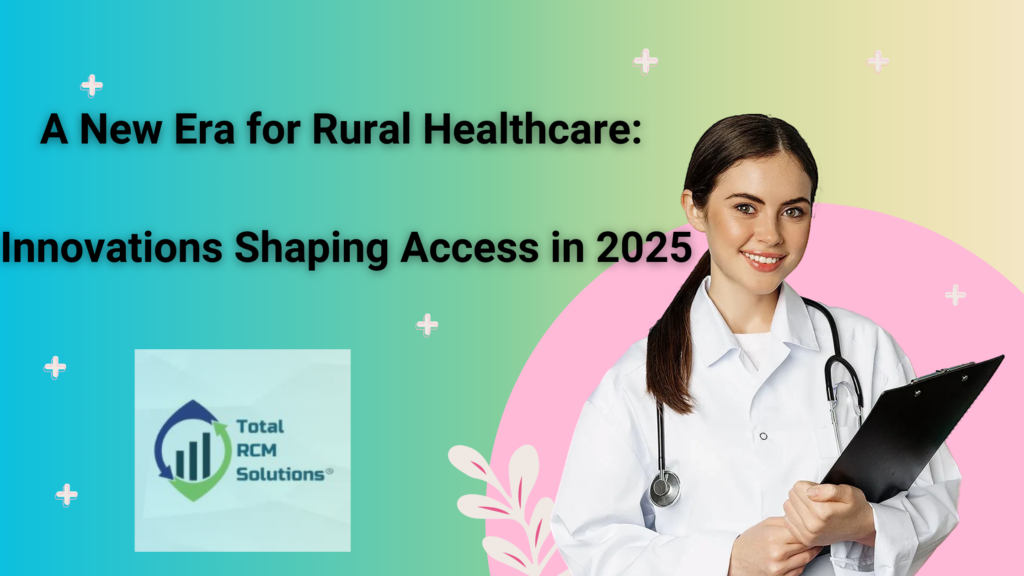In 2025, rural healthcare in the U.S. will look very different from today. For years, rural communities have struggled with limited access to healthcare services, whether due to a shortage of medical professionals, long travel distances, or underfunded local facilities. But thanks to a wave of technological and policy innovations, these challenges are beginning to transform into opportunities. Here’s a glimpse into the future of healthcare in rural America and how new strategies and technologies will improve access by 2025.
1. Telemedicine: Expanding Access to Experts
Telemedicine has already made a huge impact in rural healthcare, and by 2025, it will be a key part of daily care. With high-speed internet expanding into more remote areas, patients will have access to specialists they’ve never had before. No longer will rural residents have to travel long distances for consultations. Virtual visits will offer convenience, especially for mental health services, routine check-ups, and post-operative care. As telemedicine becomes more widely accepted by insurance providers, it will significantly reduce the barriers to care.
2. Mobile Health Clinics: Bringing Healthcare to Your Doorstep
Imagine a doctor’s office on wheels—this is becoming a reality for many rural communities. By 2025, mobile health clinics will be a game-changer, delivering essential services directly to underserved areas. These mobile units will provide a range of services, from primary care and vaccinations to diagnostics and dental care. Equipped with the latest medical technology, these clinics will bring healthcare right to the doorstep of those who need it most, minimizing travel time and making preventive care more accessible.
3. AI and Data-Driven Healthcare: Predicting and Preventing Health Crises
Artificial intelligence (AI) will play a big role in predicting and preventing health problems in rural areas. By 2025, healthcare providers in rural communities will use AI-powered tools to monitor patients’ health remotely, alerting doctors to potential issues before they become critical. Data-driven platforms will track everything from chronic disease management to real-time health trends, helping rural hospitals optimize resources and improve patient outcomes. AI’s predictive capabilities will also support decision-making, ensuring that rural healthcare providers can intervene early and prevent costly medical emergencies.
4. Digital Health Records: Streamlining Care Coordination
As rural healthcare centers increasingly adopt digital health records, patients’ medical histories will be accessible to any provider, regardless of location. This will not only improve coordination of care but also reduce errors, delays, and unnecessary treatments. By 2025, rural areas will have more integrated healthcare systems, where medical professionals can collaborate more effectively with one another, offering patients a seamless experience across different settings.
5. Broadband Expansion: A Lifeline for Rural Healthcare
Perhaps the most crucial development for the future of rural healthcare is the expansion of broadband internet. High-speed internet will unlock many other innovations, from telehealth to online health education and remote monitoring. The federal government and private sectors are already investing in infrastructure to ensure that rural areas have the reliable connectivity they need. By 2025, rural communities will be better connected than ever, allowing them to access the same healthcare resources as urban areas.
6. Community Health Workers: Bridging Gaps and Building Trust
Rural healthcare can often suffer from a lack of trust between patients and providers, especially in tight-knit communities. By 2025, community health workers (CHWs) will play an even more significant role in bridging this gap. Trained in both healthcare and local customs, CHWs will offer culturally competent support, guiding patients through the healthcare system, educating them about health conditions, and helping them access necessary services. This community-based approach will improve health literacy and ensure that patients in rural areas have the support they need to manage their health.
7. Rural Health Innovation Hubs: Collaboration for Better Care
As part of the drive to improve rural healthcare, new rural health innovation hubs will emerge by 2025. These hubs will foster partnerships between rural healthcare providers, universities, and tech companies to create and test new solutions tailored specifically to rural communities. These collaborations will lead to breakthrough innovations, such as affordable health devices, mobile health apps, and new ways of delivering care that can be scaled up across the country.
8. Training and Retaining Rural Healthcare Workers
One of the biggest challenges for rural healthcare is the shortage of healthcare workers. To tackle this, 2025 will see more incentives for doctors, nurses, and specialists to work in rural areas. These incentives will include loan repayment programs, scholarships, and even remote working opportunities. Training programs will also become more regionally focused, equipping healthcare workers with the skills and cultural knowledge necessary to serve rural populations effectively.
What Does This Mean for Rural Communities in 2025?
By 2025, rural Americans will no longer feel isolated from modern healthcare. With the combination of technology, community-focused solutions, and policy shifts, healthcare in rural areas will become more accessible, affordable, and patient-centered. Whether through telehealth consultations, mobile clinics, or AI-powered preventive care, rural communities will be better equipped to handle their healthcare needs without having to travel great distances or wait for essential services.

